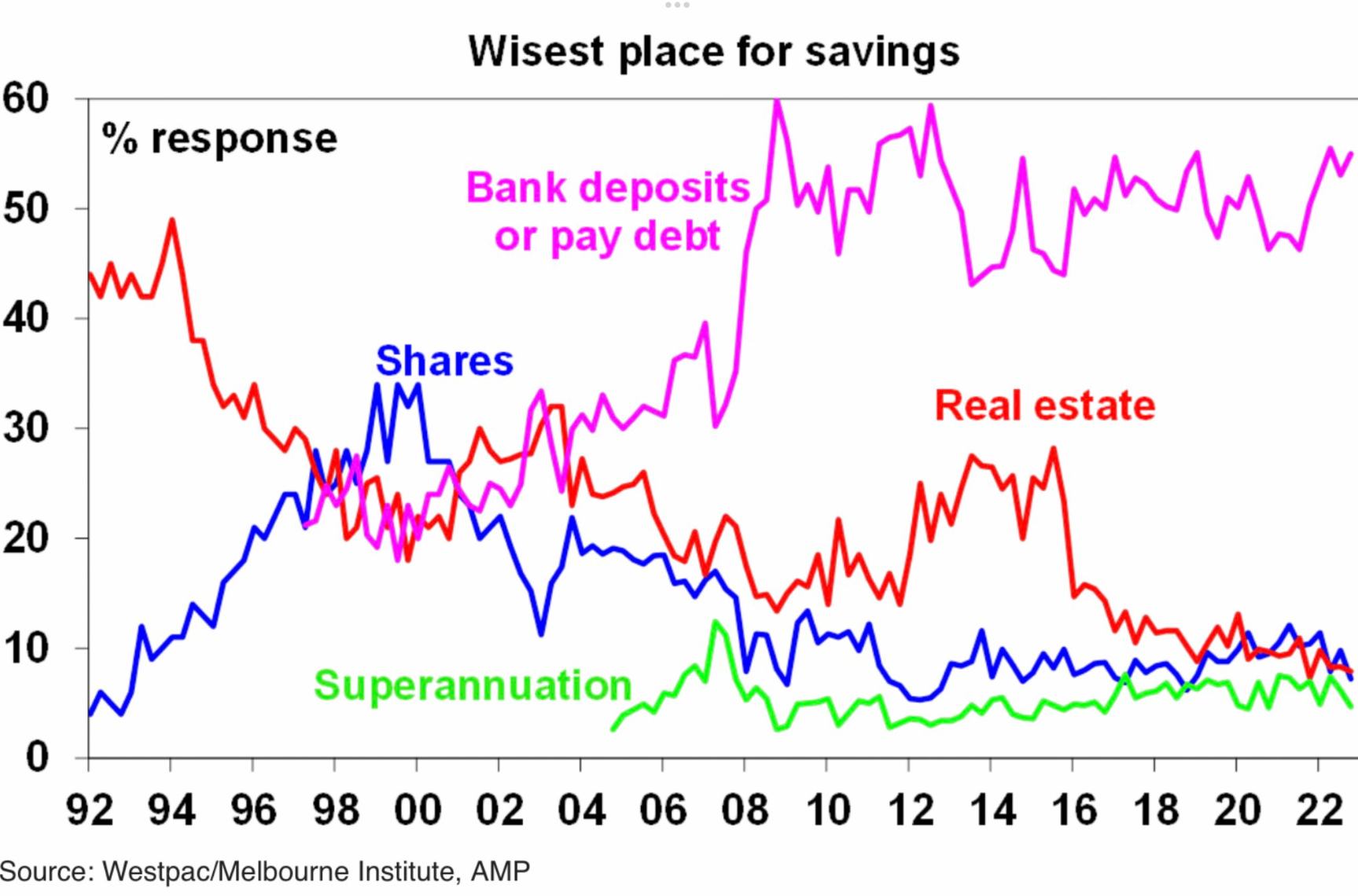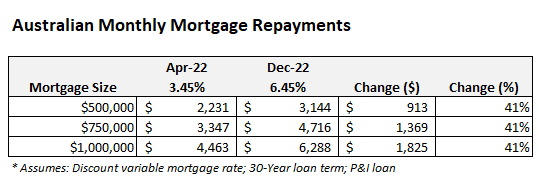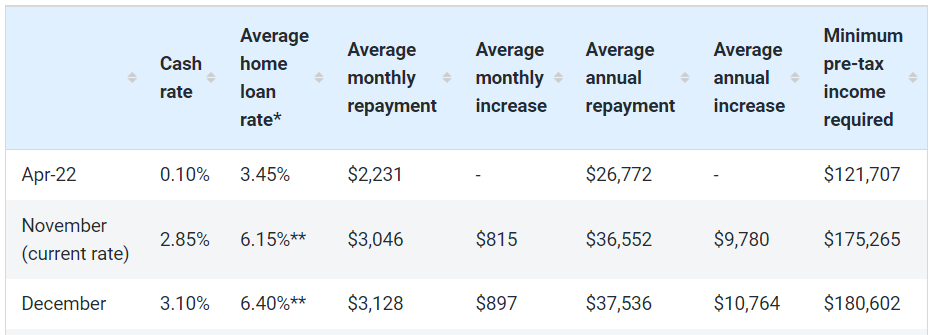Westpac’s latest consumer sentiment survey, released on Tuesday, revealed that Australians are “deeply pessimistic” about the housing market, with the ‘time to buy a dwelling’ index falling 2.9% to 74.9, holding near cycle lows.
“The index has been stuck in the deeply pessimistic 75 to 80 range for the last six months and remains 43% below its most recent peak in November 2020”, according to Westpac, held down by poor affordability. Westpac also believes that homebuyer sentiment will remain “firmly in the doldrums” given interest rates are expected to rise further.
Interestingly, AMP chief economist, Shane Oliver, posted the below chart on Twitter based on the Westpac survey. It shows that Australians are no longer interested in purchasing property and prefer to save or pay down debt:

It’s easy to see why. The 3% of interest rate hikes already delivered by the Reserve Bank of Australia (RBA) has increased average variable mortgage repayments by 41% versus their April pre-tightening level:

In turn, borrowing capacity has been smashed. According to Finder, the amount of pre-tax income required to service a $500,000 mortgage has risen from around $121,000 in April 2022 to $181,000 as at December, following the RBA’s rate hikes:

For these reasons, Shane Oliver has tipped a 15% to 20% peak-to-trough fall in Australian house prices, with values not expected to rebound until the final quarter of 2023 after the RBA has begun cutting rates:
Australian home prices are likely to fall further as rate hikes continue to impact, resulting in a top to bottom fall of 15-20%, but with prices expected to bottom around the September quarter, ahead of gains late in the year as the RBA moves toward rate cuts.
This forecast makes sense. Lower borrowing capacity equals lower house prices. The equation is that simple.
Therefore, house prices will continue to fall until the RBA reverses track and starts cutting rates in late 2023.

